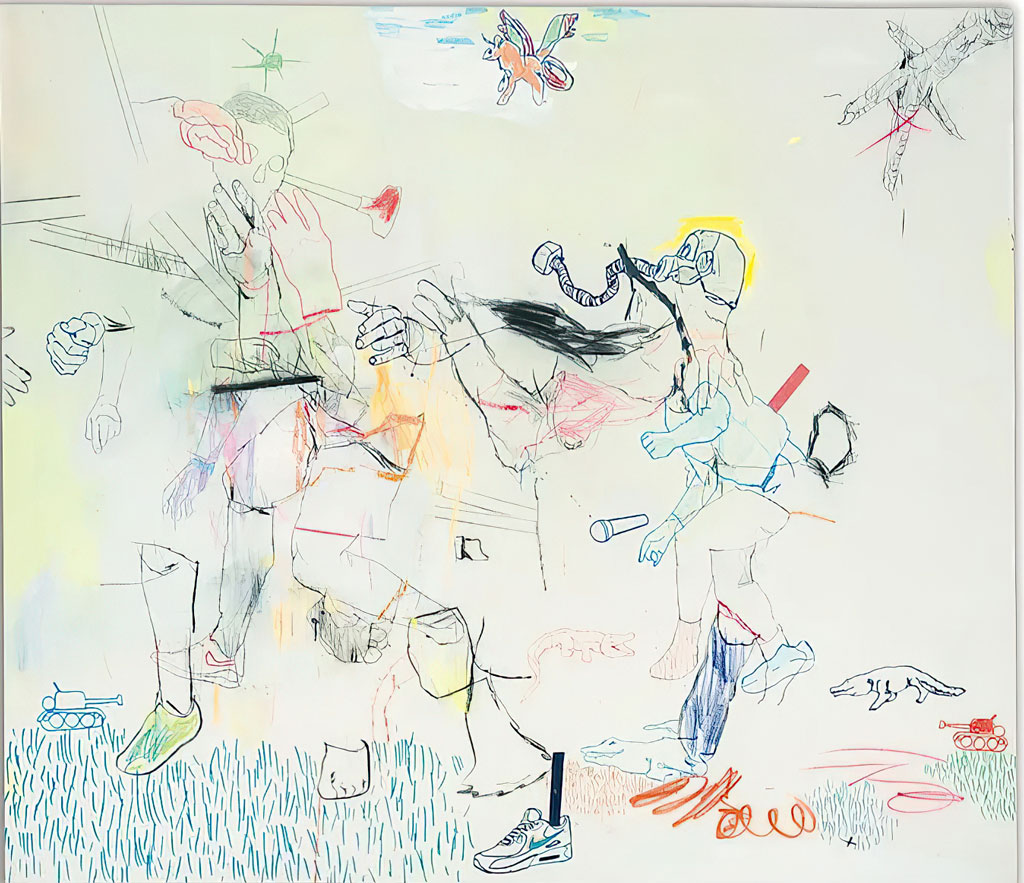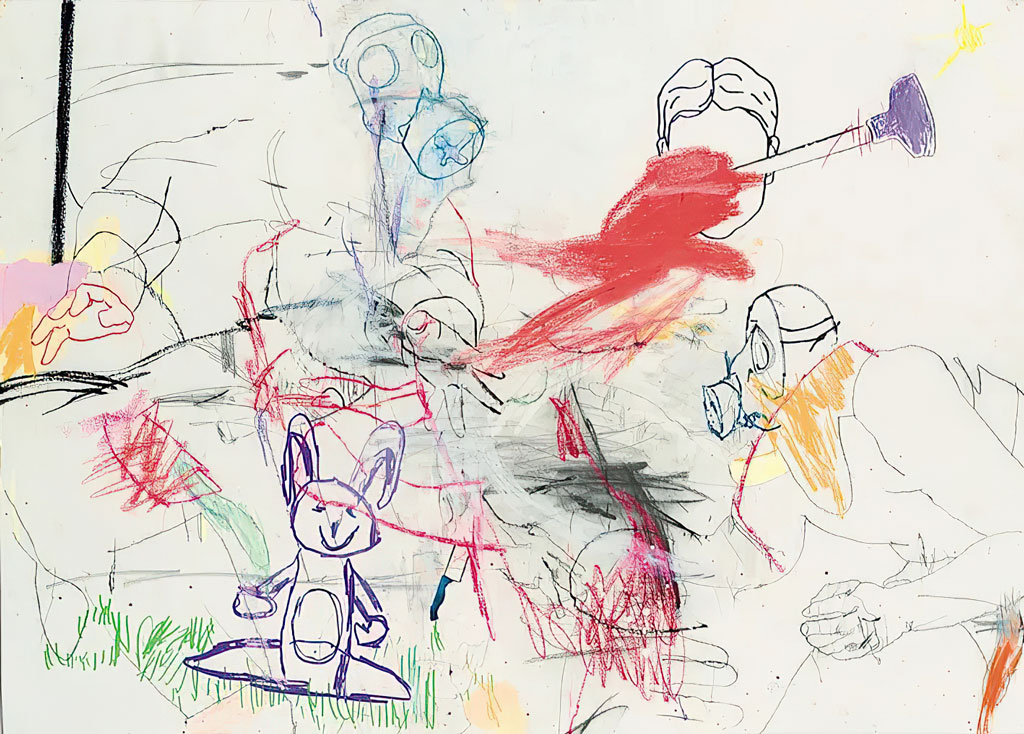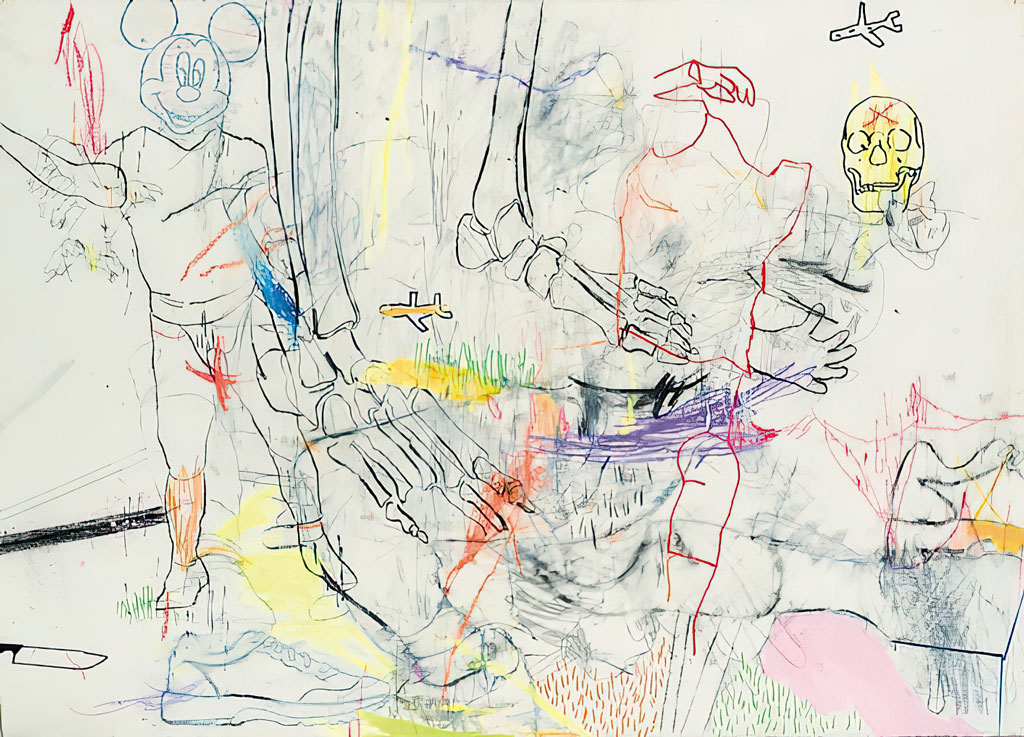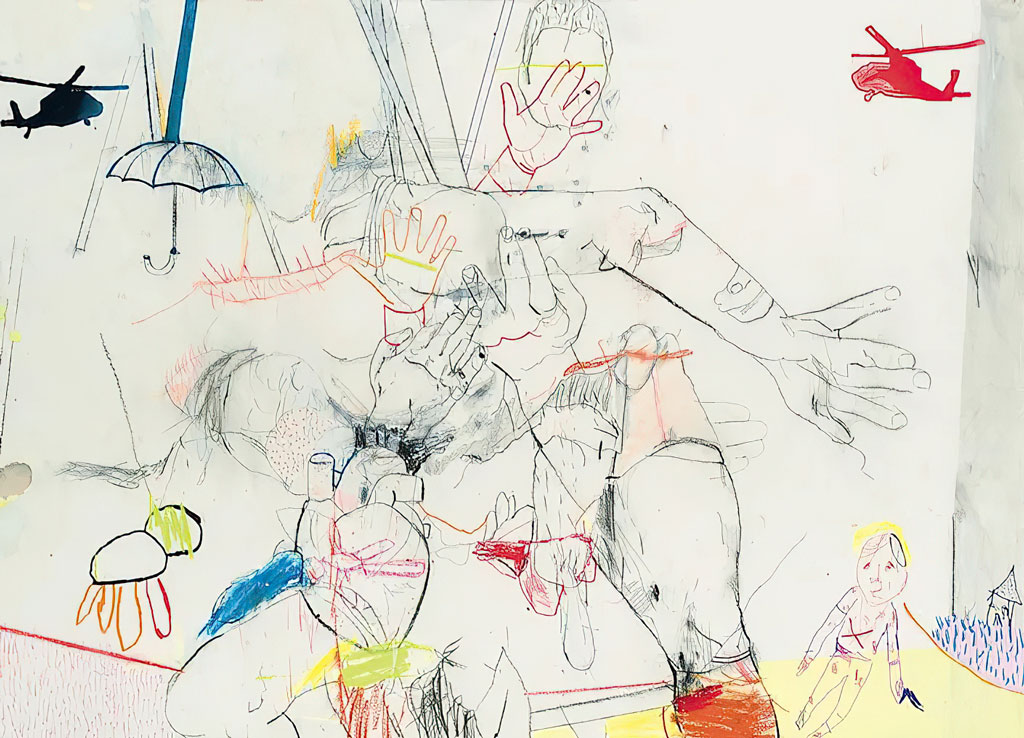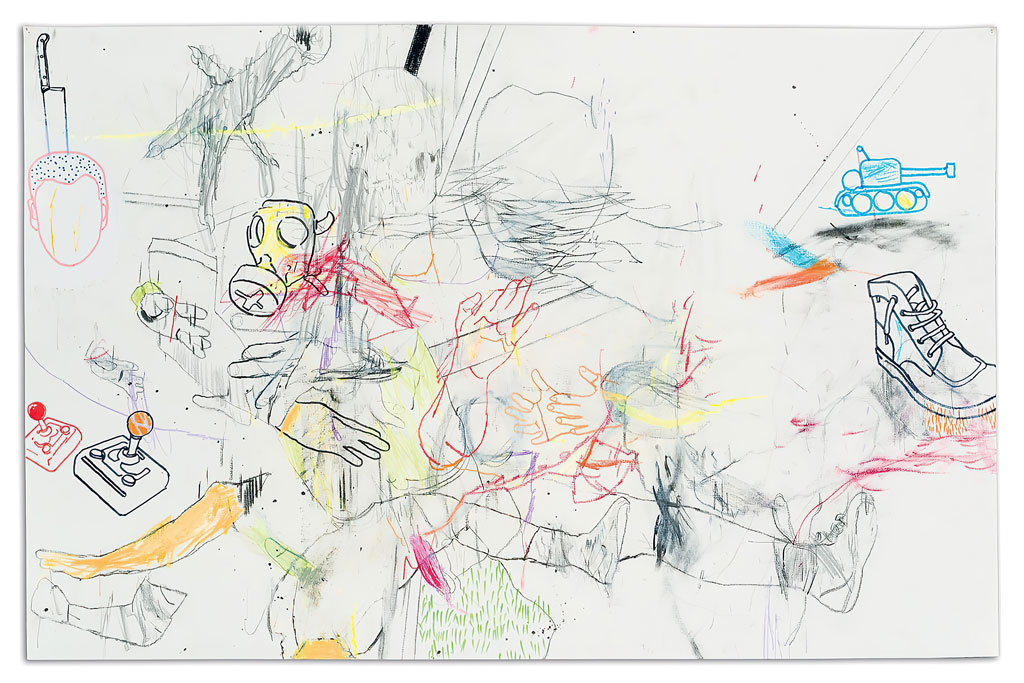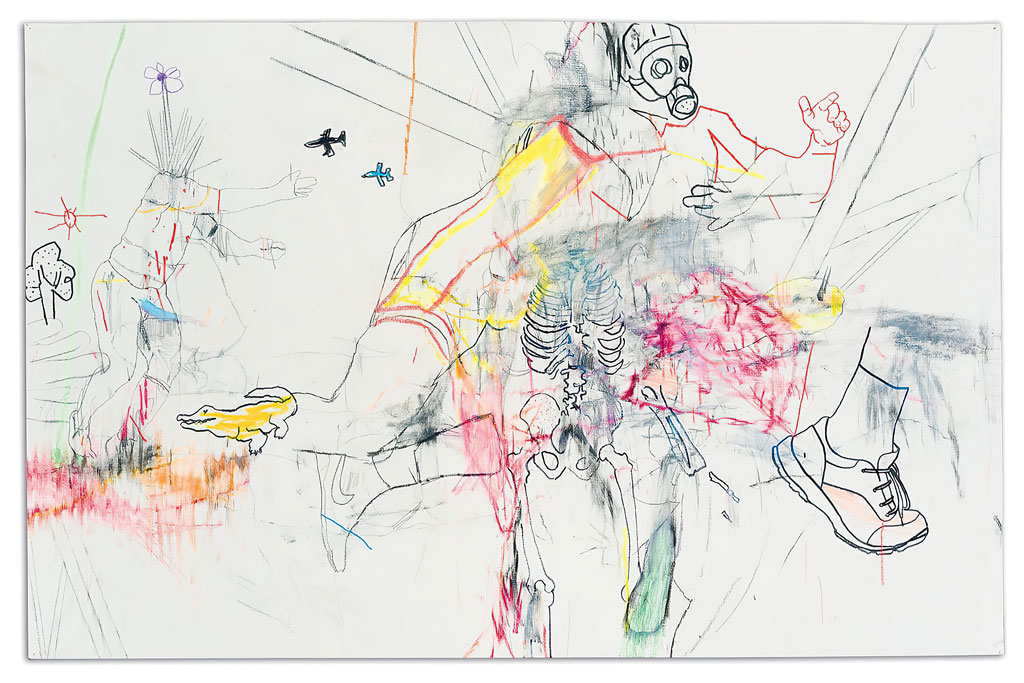ART PRESENTATION: Thameur Mejri-Walking Targets
![]() Thameur Mejri investigates complexities of human existence by identifying parallels between paradoxical ideas of violence, innocence, guilt and shame. The human figure acts as a central element throughout his compositions, the vigorous manner in which Mejri places the figure onto the canvas, reflects the relationship between painting and painter, suggesting self-portraits that battle to fully emerge and reveal themselves.
Thameur Mejri investigates complexities of human existence by identifying parallels between paradoxical ideas of violence, innocence, guilt and shame. The human figure acts as a central element throughout his compositions, the vigorous manner in which Mejri places the figure onto the canvas, reflects the relationship between painting and painter, suggesting self-portraits that battle to fully emerge and reveal themselves.
By Efi Michalarou
Photo: Selma Feriani Gallery Archive
There is an interplay between painting and film. Thameur Mejri approaches painting as a film director and he films with the vision of a painter, allowing for the qualities of each discipline to manifest upon one another; the chaos and movement in his paintings are a testament of this. The energetic application of color establishes the atmosphere in this confrontation between heaven and hell, each represented by blue and red. In choosing these colours as a departure point and importantly for their opposing religious connotations of heaven and hell, he confirms the major influence of these symbols, particularly in the Muslim world. Thameur Mejri, through the works of his solo exhibition “Walking Targets” explores a political and critical vision of Tunisian society, while engaging the responsibility of the artist with regard to contemporary issues. The title evokes a moving target and immediately places the works in the violence register – or rather the denunciation of violence – but also of survival. We find in these new series certain constants of Mejri’s work, and in particular his attention to the human body, which he charges with a powerful political interpretation and which he has until now largely developed, especially in his large-format paintings. A change is nevertheless noticeable in the expression of this political body. It is no longer so much a matter of existential and metaphysical questions that occupy him. He seems here to be refining his reflection by working to deconstruct the relations of power and domination that structure contemporary societies, identifying in particular capitalism and the traditional ideologies that make them their instruments of control. It is in particular through line drawing, an incisive technical process already very frequent in his painting, that the artist deconstructs the human body, which he exposes, blurs and confronts, by exhibiting it, multiplying points of view, and testifying to the power relationships it can generate or undergo. In this way, the body is no longer a coherent and sacred entity because of its own complexity or the rejection it undergoes because of cultural taboos. Through this metaphor of the decomposed, reified body, he invites our gaze to confront the coexistence of the other and analyzes the relationships of domination and enslavement between genders, social strata, and the holders of spiritual and temporal power that structure societies in general, and Tunisia in particular. One way to desacralize symbols is to repeat and express them. To this end, Mejri confronts iconographies. In his work as a painter there is a construction of composition based on stratification and superimposition. Elements emerge, hide, revealing possible interpretations through association, addition and accumulation. The critique of society, which he has been practicing for more than ten years, is based on a system of legibility, which is consciously or subliminally activated or not, depending on the viewer. Often made with charcoal, the drawing in his paintings seem fragile, like a form of appearance that comes to seize the moment and risks disappearing. But in reality, this technique is part of an artistic strategy. When Mejri resorts to children’s drawing, it is because he gives shape to a conception of time, which translates into a spiral. In this way, the artist wishes to dissolve the linearity of time in order to reconnect with the past and extend it into the future. Through this process, he confronts the problems he develops with a new and constantly renewing look. He thus creates a form of discrepancy that is not devoid of humor, by dealing with deep and sometimes painful questions such as the exercise of authority, the omnipresence of violence or collective neurosis, with a naivety that may or may not be feigned.
Info: Selma Feriani Gallery, Place Sidi-Hassine 8, Rue Taieb Mhiri, Sidi Bou Said, Tunisia, Duration: 29/11/2020-23/1/2021, Days & Hours: Mon-Fri 10:00-13-00 & 14:00 – 18:00 & Sat. 9:00-16:00, www.selmaferiani.com
